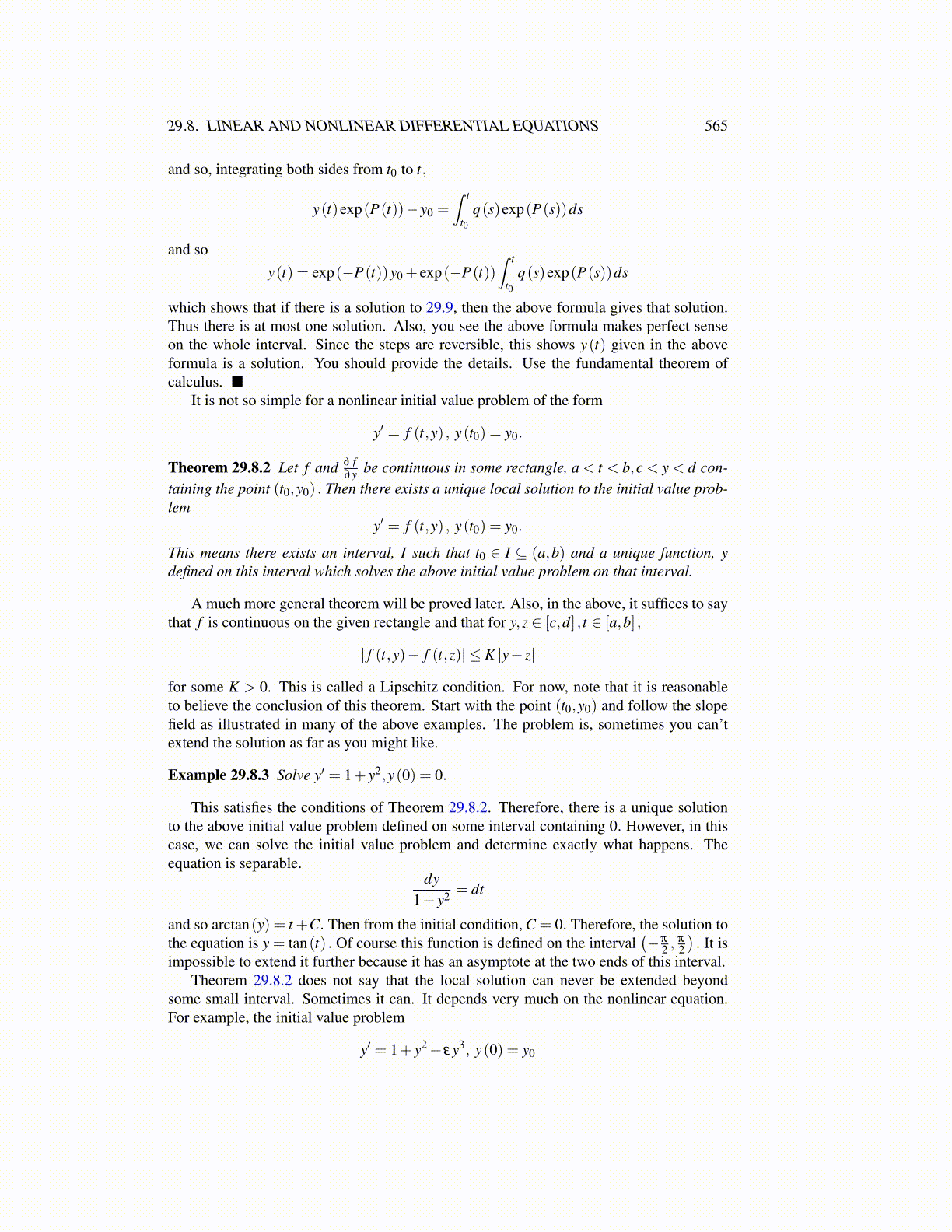
29.8. LINEAR AND NONLINEAR DIFFERENTIAL EQUATIONS 565
and so, integrating both sides from t0 to t,
y(t)exp(P(t))− y0 =∫ t
t0q(s)exp(P(s))ds
and soy(t) = exp(−P(t))y0 + exp(−P(t))
∫ t
t0q(s)exp(P(s))ds
which shows that if there is a solution to 29.9, then the above formula gives that solution.Thus there is at most one solution. Also, you see the above formula makes perfect senseon the whole interval. Since the steps are reversible, this shows y(t) given in the aboveformula is a solution. You should provide the details. Use the fundamental theorem ofcalculus. ■
It is not so simple for a nonlinear initial value problem of the form
y′ = f (t,y) , y(t0) = y0.
Theorem 29.8.2 Let f and ∂ f∂y be continuous in some rectangle, a < t < b,c < y < d con-
taining the point (t0,y0) . Then there exists a unique local solution to the initial value prob-lem
y′ = f (t,y) , y(t0) = y0.
This means there exists an interval, I such that t0 ∈ I ⊆ (a,b) and a unique function, ydefined on this interval which solves the above initial value problem on that interval.
A much more general theorem will be proved later. Also, in the above, it suffices to saythat f is continuous on the given rectangle and that for y,z ∈ [c,d] , t ∈ [a,b] ,
| f (t,y)− f (t,z)| ≤ K |y− z|
for some K > 0. This is called a Lipschitz condition. For now, note that it is reasonableto believe the conclusion of this theorem. Start with the point (t0,y0) and follow the slopefield as illustrated in many of the above examples. The problem is, sometimes you can’textend the solution as far as you might like.
Example 29.8.3 Solve y′ = 1+ y2,y(0) = 0.
This satisfies the conditions of Theorem 29.8.2. Therefore, there is a unique solutionto the above initial value problem defined on some interval containing 0. However, in thiscase, we can solve the initial value problem and determine exactly what happens. Theequation is separable.
dy1+ y2 = dt
and so arctan(y) = t +C. Then from the initial condition, C = 0. Therefore, the solution tothe equation is y = tan(t) . Of course this function is defined on the interval
(−π
2 ,π
2
). It is
impossible to extend it further because it has an asymptote at the two ends of this interval.Theorem 29.8.2 does not say that the local solution can never be extended beyond
some small interval. Sometimes it can. It depends very much on the nonlinear equation.For example, the initial value problem
y′ = 1+ y2− εy3, y(0) = y0